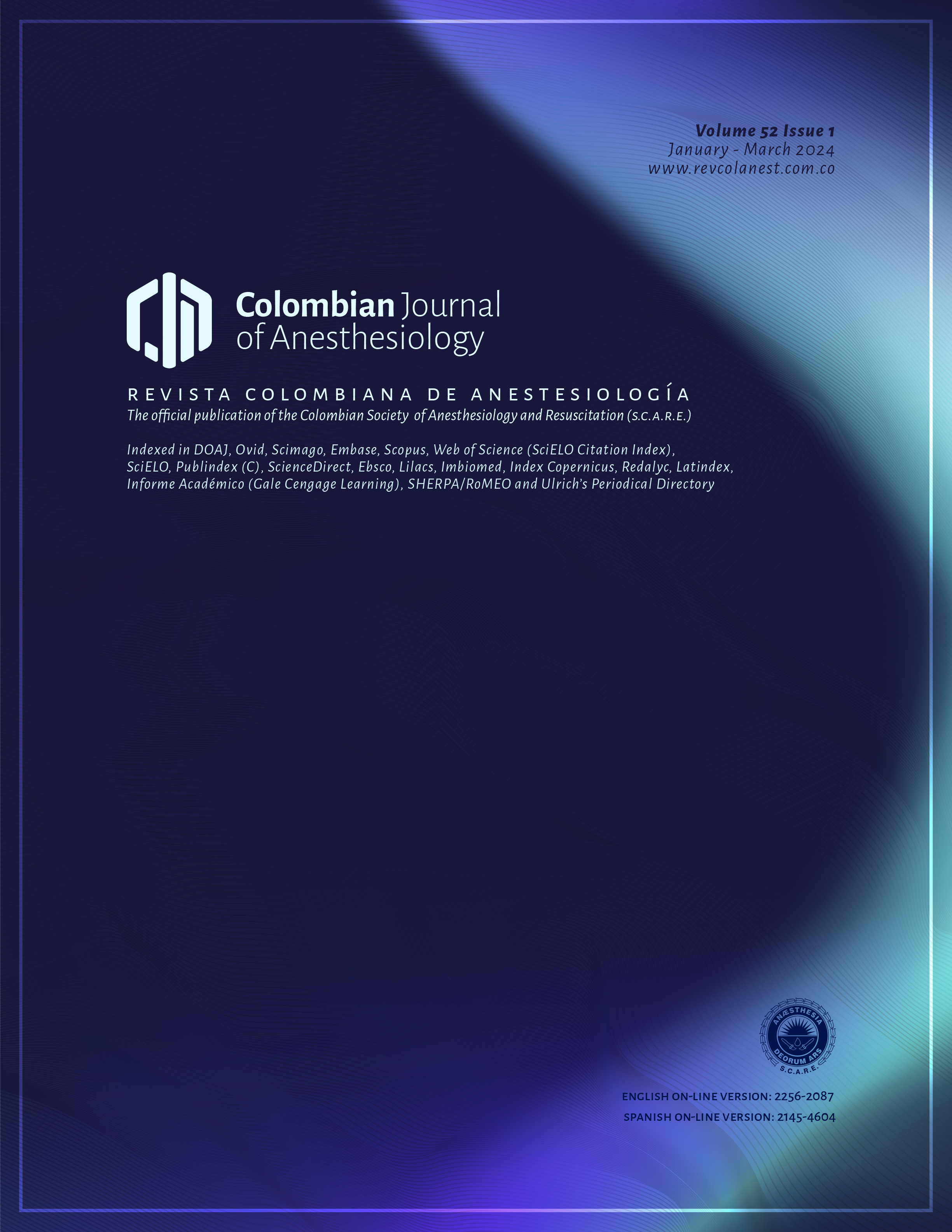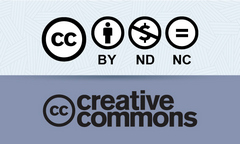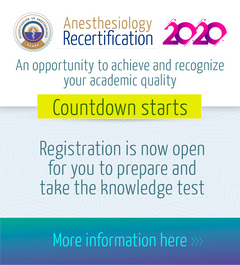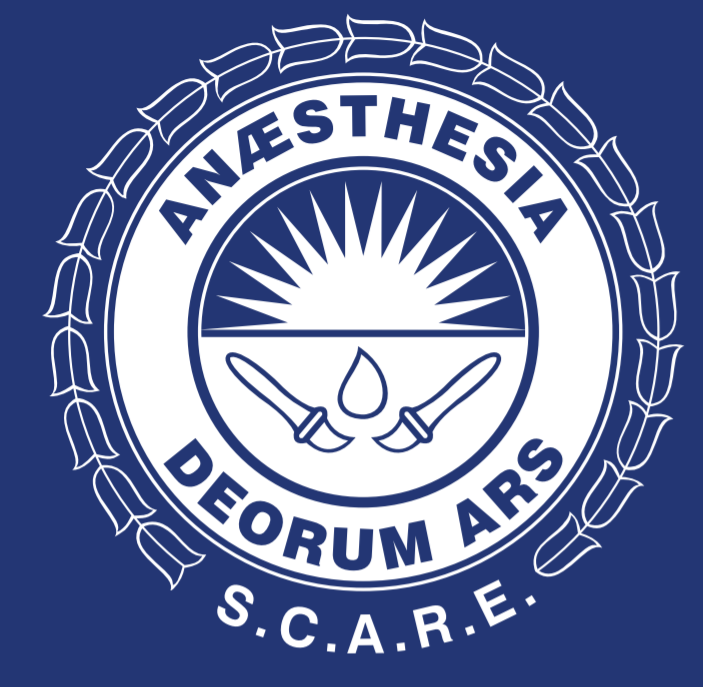Artificial intelligence, applications and challenges in simulation-based education
Abstract
The rapid advancement of Artificial Intelligence (AI) has taken the world by “surprise” due to the lack of regulation over this technological innovation which, while promising application opportunities in different fields of knowledge, including education, simultaneously generates concern, rejection and even fear.
In the field of Health Sciences Education, clinical simulation has transformed educational practice; however, its formal insertion is still heterogeneous, and we are now facing a new technological revolution where AI has the potential to transform the way we conceive its application.
References
Cifuentes-Gaitán MJ, González-Rojas D, Ricardo-Zapata A, Díaz-Guio DA. Transferencia del aprendizaje de emergencias y cuidado crítico desde la simulación de alta fidelidad a la práctica clínica. Acta Colomb Cuid Intensivo. 2020;21(1):17-21. doi: https://doi.org/10.1016/j.acci.2020.06.001
Cortegiani A, Russotto V, Montalto F, Iozzo P, Palmeri C, Raineri SM, et al. Effect of high-fidelity simulation on medical students’ knowledge about advanced life support: A randomized study. PLoS One. 2015;10(5):e0125685. doi: https://doi.org/10.1371/journal.pone.0125685
Arora S, Hull L, Fitzpatrick M, Sevdalis N, Birnbach DJ. Crisis management on surgical wards. Ann Surg. 2015;261(5):1. doi: https://doi.org/10.1097/SLA.0000000000000824
Doumouras AG, Engels PT. Early crisis nontechnical skill teaching in residency leads to long-term skill retention and improved performance during crises: A prospective, nonrandomized controlled study. Surg (United States). 2017;162(1):174-81. doi: https://doi.org/10.1016/j.surg.2016.11.022
Brydges R, Hatala R, Mylopoulos M. Examining residents’ strategic mindfulness during self-regulated learning of a simulated procedural skill. J Grad Med Educ. 2016;8(3):364-71. doi: https://doi.org/10.4300/JGME-D-15-00491.1
Russell E, Petrosoniak A, Caners K, Mastoras G, Szulewski A, Dakin C, et al. Simulation in the continuing professional development of academic emergency physicians. Simul Heal. 2020;00(00):1-8.
Forristal C, Russell E, McColl T, Petrosoniak A, Thoma B, Caners K, et al. Simulation in the continuing professional development of academic emergency physicians. Simul Healthc J Soc Simul Healthc. 2020;Publish Ah(00):1-8. doi: https://doi.org/10.1017/cem.2019.87
Nestel D, Bearman M. Theory and simulation-based education: Definitions, worldviews and applications. Clin Simul Nurs. 2015;11(8):349-54. doi: http://dx.doi.org/10.1016/j.ecns.2015.05.013
Ferrero F, Díaz-Guio DA. Educación basada en simulación: polemizando bases teóricas de la formación docente. Simulación Clínica. 2021;3(1):35-9. doi: https://doi.org/10.35366/99867
Ferguson J, Astbury J, Willis S, Silverthorne J, Schafheutle E. Implementing, embedding and sustaining simulation-based education: What helps, what hinders. Med Educ. 2020;54(10):915-–24. doi: https://doi.org/10.1111/medu.14182
Díaz-Guio DA, Ríos-Barrientos E, Santillán-Roldan PA, Díaz-Gómez AS, Ricardo-Zapata A, Mora-Martinez S, et al. Online-synchronized clinical simulation: an efficient teaching-learning option for the COVID-19 pandemic time and beyond. Adv Simul. 2021;6:30. doi: https://doi.org/10.21203/rs.3.rs-106185/v1
Sherwood RJ, Francis G. The effect of mannequin fidelity on the achievement of learning outcomes for nursing, midwifery and allied healthcare practitioners: Systematic review and meta-analysis. Nurse Educ Today. 2018;69:81-94. doi: https://doi.org/10.1016/j.nedt.2018.06.025
Ouyang F, Jiao P. Artificial intelligence in education: The three paradigms. Comput Educ Artif Intell. 2021;2(April):100020. doi: https://doi.org/10.1016/j.caeai.2021.100020
Haenlein M, Kaplan A. A brief history of artificial intelligence: On the past, present, and future of artificial intelligence. Calif Manage Rev. 2019;61(4):5-14. doi: https://doi.org/10.1177/0008125619864925
Moor M, Banerjee O, Abad ZSH, Krumholz HM, Leskovec J, Topol EJ, et al. Foundation models for generalist medical artificial intelligence. Nature. 2023;616(7956):259-65. doi: http://www.ncbi.nlm.nih.gov/pubmed/37045921
Dwivedi YK, Kshetri N, Hughes L, Slade EL, Jeyaraj A, Kar AK, et al. “So what if ChatGPT wrote it?” Multidisciplinary perspectives on opportunities, challenges and implications of generative conversational AI for research, practice and policy. Int J Inf Manage. 2023;71(March). doi: https://doi.org/10.1016/j.ijinfomgt.2023.102642
Khanna A, Pandey B, Vashishta K, Kalia K, Pradeepkumar B, Das T. A Study of Today’s A.I. through chatbots and rediscovery of machine intelligence. Int J Service, Sci Technol. 2015;8(7):277-84. doi: https://doi.org/10.14257/ijunesst.2015.8.7.28
Adamopoulou E, Moussiades L. An overview of chatbot technology [Internet]. Vol. 584 IFIP, IFIP Advances in Information and Communication Technology. Springer International Publishing; 2020. Pp. 373-83. Disponible en: http://dx.doi.org/10.1007/978-3-030-49186-4_31
Alser M, Waisberg E. Concerns with the usage of ChatGPT in Academia and Medicine: A viewpoint. Am J Med Open. 2023;100036. doi: https://doi.org/10.1016/j.ajmo.2023.100036
Halaweh M. ChatGPT in education: Strategies for responsible implementation. Contemp Educ Technol. 2023;15(2):ep421. doi: https://doi.org/10.30935/cedtech/13036
Moldt JA, Festl-Wietek T, Madany Mamlouk A, Nieselt K, Fuhl W, Herrmann-Werner A. Chatbots for future docs: exploring medical students’ attitudes and knowledge towards artificial intelligence and medical chatbots. Med Educ Online. 2023;28(1). doi: https://doi.org/10.1080/10872981.2023.2182659
Lim WM, Gunasekara A, Pallant JL, Pallant JI, Pechenkina E. Generative AI and the future of education: Ragnarök or reformation? A paradoxical perspective from management educators. Int J Manag Educ. 2023;21(2):1-13. doi: https://doi.org/10.1016/j.ijme.2023.100790
Wang J, Zhu H, Wang SH, Zhang YD. A Review of deep learning on medical image analysis. Mob Networks Appl. 2021;26(1):351-80. doi: https://doi.org/10.1007/s11036-020-01672-7
Jayatilake SMDAC, Ganegoda GU. Involvement of machine learning tools in healthcare decision making. J Healthc Eng. 2021;2021. doi: https://doi.org/10.1155/2021/6679512
Time SR, Matching SS. Encyclopedia of the sciences of learning. Encyclopedia of the Sciences of Learning. 2012.
Young T, Hazarika D, Poria S, Cambria E. Recent trends in deep learning based natural language processing [Review Article]. IEEE Comput Intell Mag. 2018;13(3):55-75. doi: https://doi.org/10.1109/MCI.2018.2840738
Lee J, Wu AS, Li D, Kulasegaram KM. Artificial intelligence in undergraduate medical education: A scoping review. Acad Med. 2021;96(11):S62-70. doi: https://doi.org/10.1097/ACM.0000000000004291
Civaner MM, Uncu Y, Bulut F, Chalil EG, Tatli A. Artificial intelligence in medical education: a cross-sectional needs assessment. BMC Med Educ. 2022;22(1):1-9. doi: https://doi.org/10.1186/s12909-022-03852-3
Ossa LA, Rost M, Lorenzini G, Shaw DM, Elger BS. A smarter perspective: Learning with and from AI-cases. Artif Intell Med. 2023;135(October 2021):102458. doi: https://doi.org/10.1016/j.artmed.2022.102458
Monereo C, Pozo J. En qué siglo vive la escuela? Cuad Pedagog. 2001;298(January 2001):50-5.
Dieckmann P, Gaba D, Rall M. Deepening the theoretical foundations of patient simulation as social practice. Simul Healthc. 2007;2(3):183-93. doi: https://doi.org/10.1097/SIH.0b013e3180f637f5
Mcgriff SJ. Instructional System Design (ISD): Using the ADDIE Model. Instr Syst Coll Educ Penn State Univ [Internet]. 2000;2. Disponible en: https://www.lib.purdue.edu/sites/default/files/directory/butler38/ADDIE.pdf
Díaz-Guio DA, del Moral I, Maestre JM. Do we want intensivists to be competent or excellent? Clinical simulation-based mastery learning. Acta Colomb Cuid Intensivo. 2015;15(3):187-95. doi: https://doi.org/10.1016/j.acci.2015.05.001
Ericsson KA. Deliberate practice and the acquisition and maintenance of expert performance in medicine and related domains. Acad Med. 2004;79(10 Suppl):S70-81. doi: https://doi.org/10.1097/00001888-200410001-00022
Barsuk JH, Cohen ER, Wayne DB, Siddal VJ, McGaghie W. Developing a simulation-based mastery learning curriculum: Lessons from 11 years of advanced cardiac life support. Simul Heal. 2016;11(1):52-9. doi: https://doi.org/10.1097/SIH.0000000000000120
Ledwos N, Mirchi N, Yilmaz R, Winkler-schwartz A, Sawni A, Fazlollahi AM, et al. Assessment of learning curves on a simulated neurosurgical task using metrics selected by artificial intelligence. J Neurosurg. 2022;137:1160-71. doi: https://doi.org/10.3171/2021.12.JNS211563
Sawyer T, Eppich W, Brett-Fleegler M, Grant V, Cheng A. More than one way to debrief. Simul Healthc. 2016;11(3):209-17. doi: https://doi.org/10.1097/SIH.0000000000000148
Roussin C, Sawyer T, Weinstock P. Assessing competency using simulation: The SimZones approach. BMJ Simul Technol Enhanc Learn. 2020;6(5):262-7. doi: https://doi.org/10.1136/bmjstel-2019-000480
Díaz-Guio D, Cimadevilla-Calvo B. Educación basada en simulación: Debriefing, sus fundamentos, bondades y dificultades. Revista Latinoamericana de Simulación Clínica. 2019;1:95-103. doi: https://doi.org/10.35366/RSC192F
Díaz-Guio DA, Ruiz-Ortega FJ. Relationship among mental models , theories of change , and metacognition: structured clinical simulation. Colombian Journal of Anesthesiology. 2019;47(14):113-6. doi: http://dx.doi.org/10.1097/CJ9.0000000000000107
Fengchun M, Wayne H, Huang R, Zhang H. AI and education Guidance for policymakers [Internet]. 2021. Avaiable at: https://unesdoc.unesco.org/ark:/48223/pf0000376709
Charow R, Jeyakumar T, Younus S, Dolatabadi E, Salhia M, Al-Mouaswas D, et al. Artificial intelligence education programs for health care professionals: Scoping review. JMIR Med Educ. 2021;7(4):1-22. doi: https://doi.org/10.2196/31043
OPS. Inteligencia artificial, 8 Principios rectores de la transformación digital del sector salud Caja de herramientas de transformación digital [Internet]. Inteligencia artificial. 2023. Disponible en: https://iris.paho.org/bitstream/handle/10665.2/57128/OPSEIHIS230003_spa.pdf?sequence=1&isAllowed=y
Downloads
Copyright (c) 2020 Sociedad Colombiana de Anestesiología y Reanimación (S.C.A.R.E.)

This work is licensed under a Creative Commons Attribution-NonCommercial-NoDerivatives 4.0 International License.
| Article metrics | |
|---|---|
| Abstract views | |
| Galley vies | |
| PDF Views | |
| HTML views | |
| Other views | |














